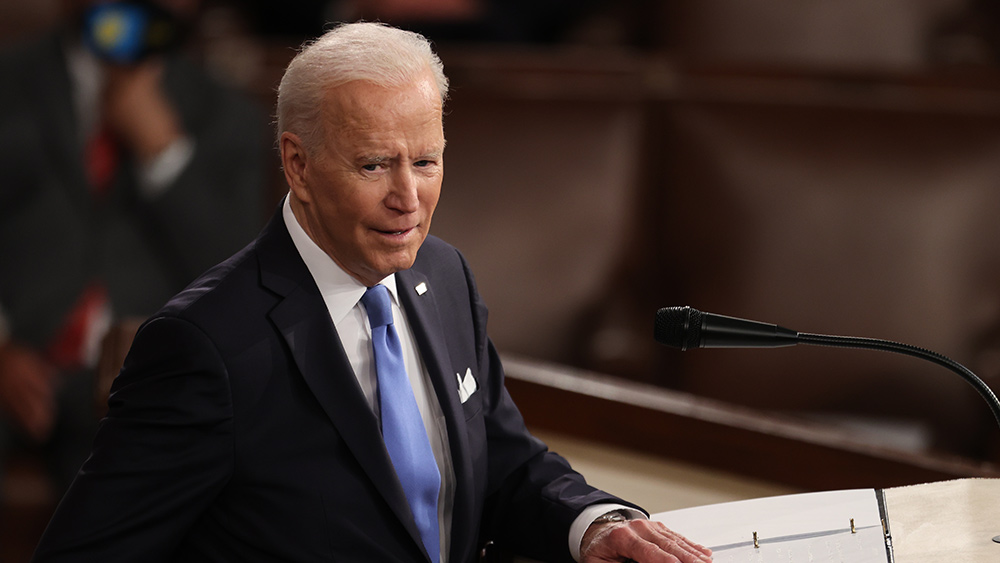Biden prioritizes gender-based issues over supply shortages and inflation
10/28/2021 / By Mary Villareal

The White House recently released a fact sheet detailing the national strategy on gender equity and equality as part of its “Gender Strategy Report.” The document, which is part of President Joe Biden’s “Build Back Better” plan, is broken down into ten interconnected priorities.
These areas of intersectional focus include economic security, gender-based violence, health, education, justice and immigration, human rights and equality under the law, security and humanitarian relief, climate change, science and technology and democracy, participation and leadership.
Biden’s strategy is both domestic and global, and it outlines priorities to support women’s rights. It also takes a cue from the national policies on gender equity of Scandinavian countries, as well as Canada’s national gender strategy.
The strategy adopts an intersectional approach that considers the barriers and challenges of individuals facing compounding forms of discrimination and bias related to gender, race, sexual orientation, ethnicity, religion, disability, age and socioeconomic status. This also includes addressing discrimination and bias issues faced by Black, Latino, Indigenous and Native American people, Asian Americans, Native Hawaiians, Pacific Islanders and other people of color.
The White House stated that as the country recovers from the pandemic, it has the opportunity to build an economy that works for women and their families. It said that in implementing its strategies, “we will advance economic growth, health, safety and the security of our nation and the world.”
However, many priorities in the Gender Strategy Report fall in harsh opposition to laws in Democratic-run states.
In California, for instance, domestic violence, rape of an unconscious or drugged person and other assaults against women are classified as “non-violent,” and those who have committed such acts are eligible for early release. The White House did not address whether or not their gender manifesto will override the rulings of California’s legislature.
Report comes at a time of multiple national crises
The report comes at a time of multiple national crises, with supply chain failure forcing price hikes. It also downplays inflation, and it appears that the White House is leaning on buzz-word-friendly rhetoric instead of focusing on issues that are affecting the lives of the majority of Americans.
For instance, the document mentions the term “human trafficking” 21 times in the report, but the term “border” only comes up twice.
This is concerning because reports found 125,000 unaccompanied children crossing the southern U.S. border since Biden took office in January. There are also no official plans for the president to visit the border or do anything to mitigate the vast numbers of women and children being trafficked into the country. (Related: ‘Millions of Americans could be threatened by lawsuits’: Senate committee ponders far-left ‘Equality Act’.)
Biden, Federal Reserve Chairman Jerome Powell and Treasury Secretary Janet Yellen said to the public that they should not worry about the recent inflation, insisting that it is “transitory,” and that it will soon lift. That seems unlikely.
The supply chain problems are a global reality. While many factors contributed to it, the main reason comes from the post-pandemic buying surge. Customers in the U.S. and around the globe have spent little during lockdowns and quarantines, and have increased buying a wide range of goods and services in the process.
A shortage of workers also worsened the strain and slowed the catchup of manufacturing. With the generous unemployment benefits in the U.S., work participation decreased to a mere 61.6 percent of the civilian population. Before the pandemic, it averaged 63.5 percent.
While the percentage change looks minimal, it does constitute a total decline of 5.5 million people available for work. The tyrannical vaccine mandates have further curtailed the workforce.
The energy shortage also strained production potential, and Biden’s policies made it worse. He began his term by shutting down the Keystone Pipeline, which could have stopped or limited the fracking revolution. Closing the pipeline resulted in a 14 percent drop in North American fossil fuel production.
Sources include:
Tagged Under: big government, deception, economic crisis, equality act, gender equality, gender issues, identity politics, inflation, Joe Biden, LGBT, national security, National Strategy on Gender Equity and Equality, political correctness, supply chain crisis, traitors
RECENT NEWS & ARTICLES
COPYRIGHT © 2018 SOCIALJUSTICE.NEWS
All content posted on this site is protected under Free Speech. SocialJustice.news is not responsible for content written by contributing authors. The information on this site is provided for educational and entertainment purposes only. It is not intended as a substitute for professional advice of any kind. SocialJustice.news assumes no responsibility for the use or misuse of this material. All trademarks, registered trademarks and service marks mentioned on this site are the property of their respective owners.



















